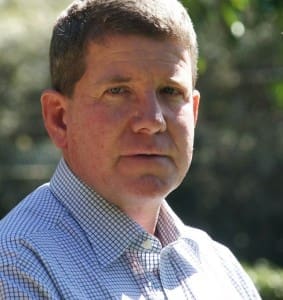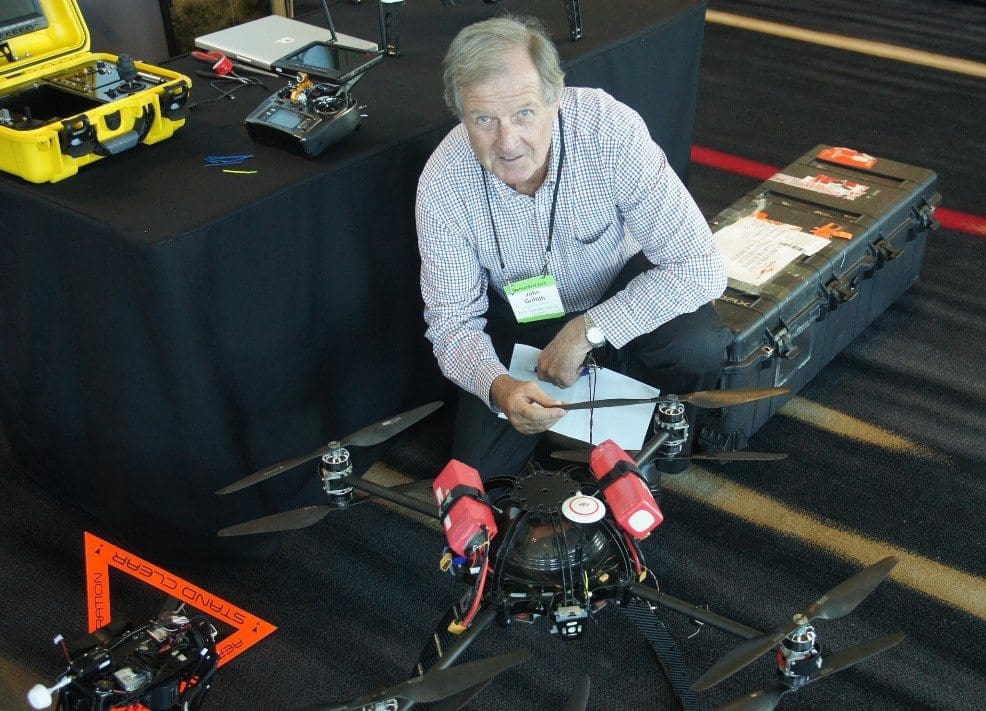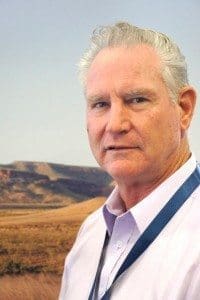ONE of the surprising aspects about last week’s Mobiletech robotics and automation technology in agriculture conference on the Gold Coast was the number of cattle industry stakeholders who made the time and effort to attend.
 Such technologies have up to now been seen as more focussed on cropping and farming systems, rather than extensive livestock production.
Such technologies have up to now been seen as more focussed on cropping and farming systems, rather than extensive livestock production.
But increasingly, the big challenges faced by the extensive (and indeed intensive) livestock industries in labour and the need for continuous improvement in productivity has seen greater scrutiny being applied in this space.
Here’s a brief snapshot of some of the conference attendees, and what they hoped to discover:
Ian McCamley, Rolleston, Qld:
“We’re probably interested in a few areas of this field. Getting all the information we’d like on prospects for the beef industry using robotics has been difficult, especially with the run-down in DPI services,” Rolleston beef producer Ian McCamley said.
“We also wanted to get a chance to talk to the technology developers about what the issues in our own extensive beef production sector are.
“Just simply the ability to get an ‘eye-in-the sky’ (using small remotely operated drones carrying a digital video camera) has appeal to us. You can throw them up quickly and get a really good remote image of what’s going on on the ground – and at a fraction of the cost of using a helicopter or fixed wing aircraft.”
“That might cover anything from grass management or managing regrowth encroachment, to checking for a few lost cattle, or simply checking waters and fences.”
Woody weed control was another obvious target for the new technology, Mr McCamley said.
“At the moment if you have brigalow regrowth, we’ll put out some Graslan, blanketing the whole paddock. But imagine surveying a paddock first with a small drone, work out the problem areas, and coming back with one of these helicopter drones that can carry a bit of weight, and spot-treating each site. That would be good for us, good for the economics, and good for the environment.
“I think it’s getting close. There’s definitely tools here that we can use right away, but also we need to keep an eye on what’s happening in development. There will be exponential growth in this space, and it’s already started.”
“We have not yet started to think about the mobility of some of this robotic and UAV gear, and what it can do in future.”
Mick Hewitt, Hewitt Cattle Co, Emerald
Mick Hewitt was motivated to attend the conference to get a better impression of what was on the horizon.
“While the short-term view on commodity prices is looking positive, we’re always looking at ways to optimise our business, and we see the use of new technologies like some of those discussed today, as being critical to that.”
“Notwithstanding the fact that we are managing large areas of land, we’re also managing animals, and wherever we can optimise that in some way for better outcomes – environmentally, animal welfare-wise, or simply for productivity reasons, it is important.
Mr Hewitt said his company had been actively examining opportunities in this space for the past 12 months, and had been in dialogue with commercial developers about applications and trials.
“There’s obviously still some limiting factors around some of the technology – things like battery life – that may limit access to larger areas, but there’s some things we could probably look to do now,” he said.
“But as some of the speakers said, it’s one thing launching an unmanned aerial vehicle, but what are you going to get out of it? There’s no point in collecting data unless it has some sort of useful application.”
“On that basis, we think it’s important to be targeted in what producers want to achieve. Woody weed control is an area of interest, as are some of the monitoring functions. But we don’t want to get to a point where farmers aren’t going out into the paddock to get dirt on their boots.”
“The last thing we want is some objective like trying to run 10,000 cattle with two staff. It’s more about trying to optimise how the business functions, rather than simply cutting back on the number of employees.”
John Griffith, NAPCo non-executive director and University of Adelaide advisory board member
As an advisory board member with the University of Adelaide, John Griffith saw the whole field including robotics and UAVs providing a channel to make agriculture a more attractive field for young graduates to work in.
“The mind boggles as to what lies ahead for the cattle industry, having come to this conference to hear what’s coming through the development pipeline,” the former AA Co managing director said.
“It’s exciting stuff. There could be potential for aerial mustering using unmanned aircraft, at a fraction of the cost of using helicopters. The people with displays here told me it was achievable. They were talking about a UAV with 20 hours flying time, carrying a payload of up to 50kg, so it sounds like the distance issue in larger-scale areas might not be a problem in future.”
“Longer term, the traditional helicopter could be more or less replaced by these vehicles.”
Beyond aerial mustering, there could be interesting applications even in large scale feedlot operations, he suggested. “Aerial vehicles equipped with sensitive thermal imaging cameras could find a role, currently handled by pen riders, in identifying those stock with respiratory problems running a temperature, for separation and treatment.”
“I can see a multitude of areas where these different technologies might apply. Killing woody weeds could change forever. In the past, there’d be a saddlebag on a horse containing some pellets, and you’d throw a few on any woody weeds you saw along the way. Drones might do that in future.”
“It’s not that far away. The woody weed control application can happen right now; while some of the others might be a few years away yet.”
Terry McCosker, Resource Consulting Services
While his primary interest in the Mobiletech conference was in the area of measurement of soil carbon, in which he specialises, Terry McCosker said he was looking for an overview of where such technologies were up to, from a livestock industry perspective.
“In terms of livestock, I think it still has a little way to go. But some applications, like perhaps mustering cattle using small pilotless quad-copters, could have application soon. With the way the prices of helicopters are going for mustering, they may have a big future,” he said.
“Helicopter mustering appears to be being replaced by gyrocopters in some parts of Queensland, which operate for about a quarter of the operating costs per hour. These UAVs may be only a fraction of that again.”
“Battery life may still be an issue still in larger areas, but they are getting better all the time.”
- Click here to view this morning’s companion story, “Robots have big role to play in future grazing systems.”







HAVE YOUR SAY